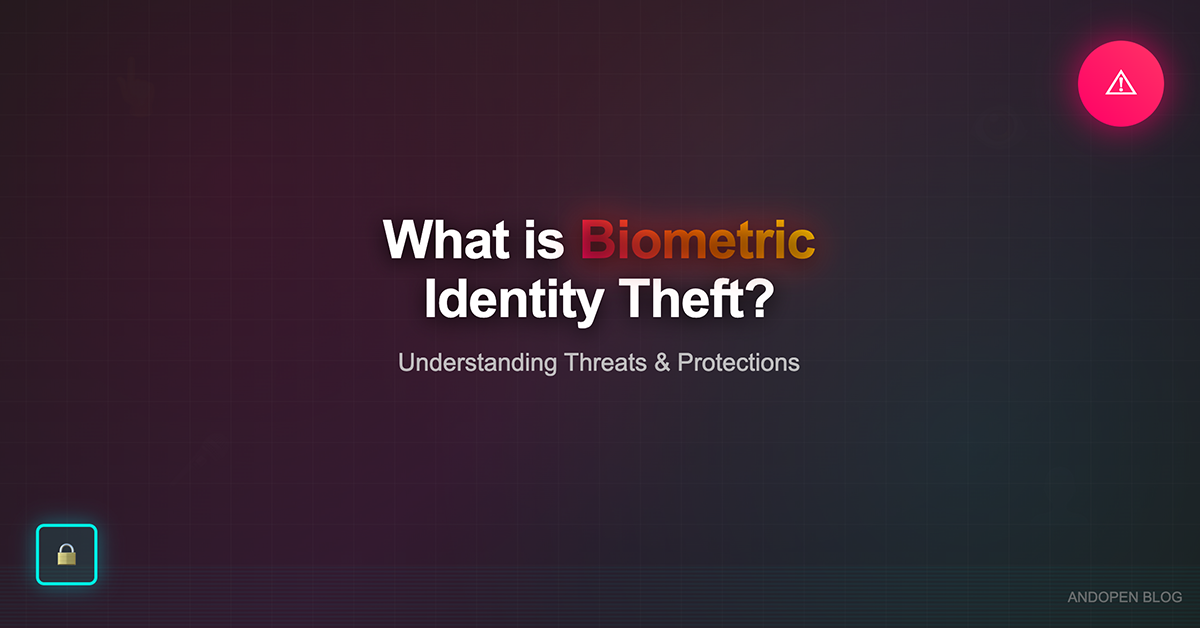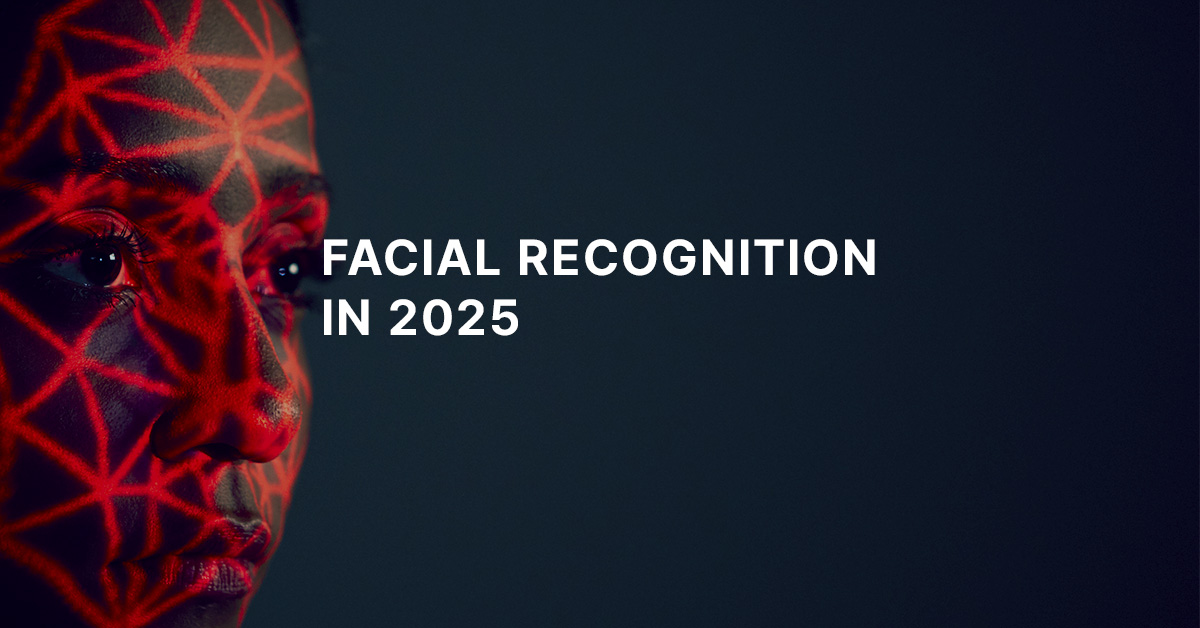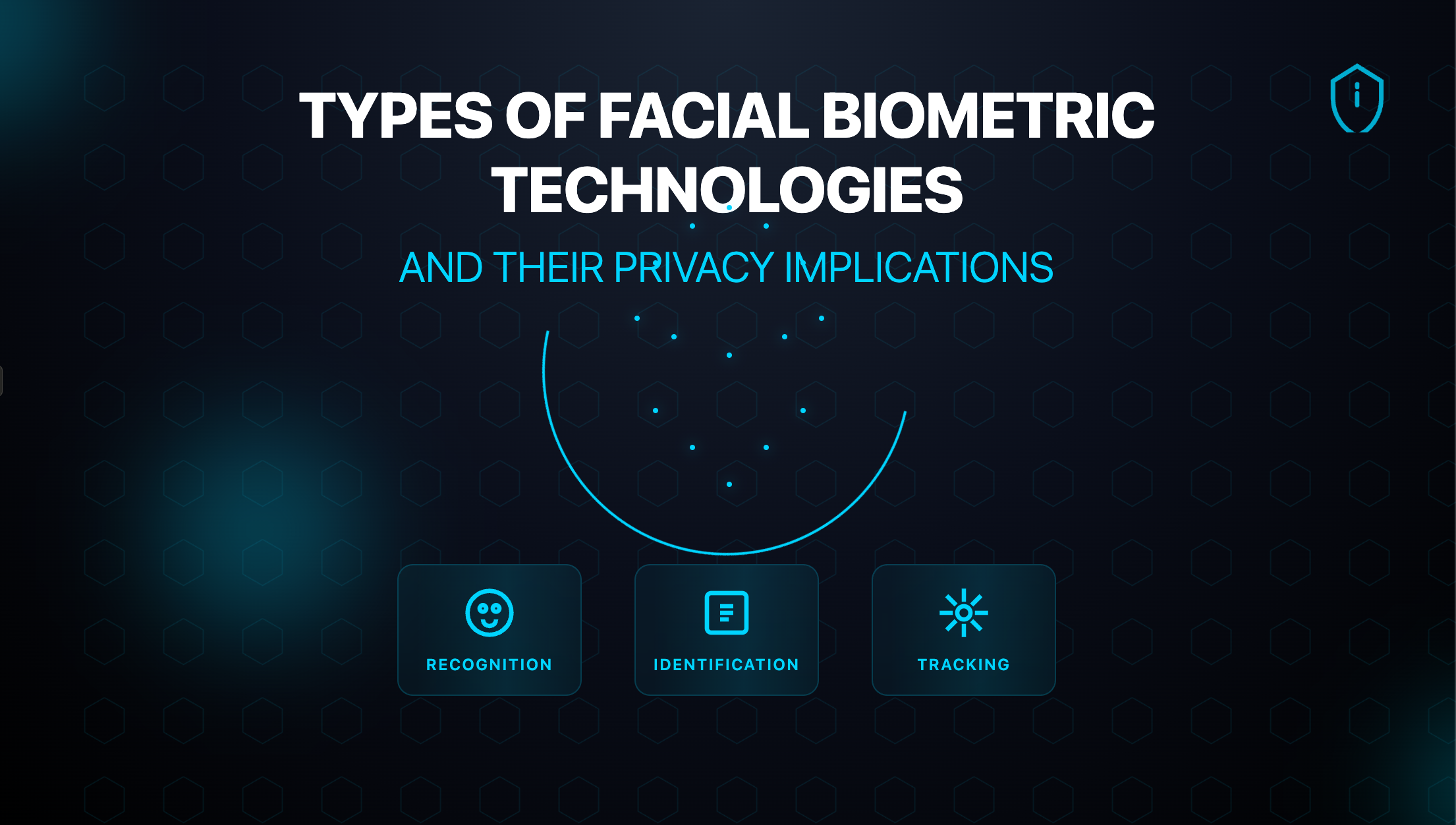
In 2019, a security researcher discovered something alarming: a biometric database containing 27.8 million records sat exposed on the internet, completely unprotected. The Suprema Biostar 2 breach didn’t just expose passwords that could be changed—it revealed over one million fingerprints and facial recognition patterns that victims will carry for life. Unlike a compromised password, you cannot reset your face or fingerprints. This fundamental truth makes biometric identity theft one of the most devastating forms of cybercrime, with incidents rising 1,300% in 2024 alone. As organizations rush to implement biometric authentication for its convenience and perceived security, they’re creating permanent vulnerabilities that state-level hackers are increasingly exploiting through AI-powered deepfakes, synthetic biometrics, and targeted database breaches.
The scope of this threat extends far beyond individual victims. When the U.S. Office of Personnel Management lost 5.6 million federal employees’ fingerprints to state-sponsored hackers in 2015, it compromised not just current security systems but every future system those individuals might use. The global biometric market, valued at $34.27 billion and growing at 20.4% annually, has become a prime target for cybercriminals who understand that stolen biometric data represents a permanent key to someone’s identity. With deepfake fraud now causing average losses of $680,000 per incident at large enterprises, organizations must understand both the technical mechanisms of these attacks and the emerging defensive technologies that can protect against them.
Understanding biometric identity theft at the technical level
Biometric identity theft exploits the unique physical and behavioral characteristics we use for digital authentication—fingerprints, facial patterns, iris scans, voice prints, and even behavioral patterns like keystroke dynamics. But to understand why these attacks are so devastating, we must first examine how biometric systems actually work and what makes them vulnerable.
When you place your finger on a scanner, the system doesn’t store an image of your fingerprint. Instead, it extracts distinctive features—ridge endings, bifurcations, and their relative positions—and converts them into a mathematical template, typically 200-2000 bytes of data. This template generation process was designed to be irreversible, theoretically preventing attackers from reconstructing your original biometric. However, research from Michigan State University and other institutions has demonstrated that these templates can be reverse-engineered with 60-80% success rates, creating synthetic biometrics capable of fooling authentication systems.
The distinction between raw biometric data and templates creates a false sense of security. While templates are smaller and supposedly non-reversible, academic studies have shown that sophisticated attacks can reconstruct usable fingerprint images from minutiae templates, generate synthetic faces matching facial recognition templates with 40-70% success rates, and even create artificial iris patterns from binary iris codes. Once an attacker obtains your biometric template—whether through a database breach, malware, or interception—they possess a permanent key to your identity.
The processing pipeline for malicious use follows a predictable pattern. Attackers first acquire biometric data through database breaches (the most common source), physical surveillance, social engineering, or collecting latent biometrics from surfaces. They then process this data using AI-powered tools to enhance quality, extract features, and cross-reference with other databases. The creation of synthetic biometrics has become increasingly sophisticated, with attackers using 3D printing for physical fingerprint spoofs that achieve 80-90% success rates, deepfake technology for facial recognition attacks, and AI voice synthesis requiring as little as one minute of source audio.
How attackers steal and weaponize biometric data
The attack vectors targeting biometric systems have evolved far beyond simple photo spoofing. Modern presentation attacks employ sophisticated techniques that exploit vulnerabilities at every level of biometric infrastructure, from the sensor to the database.
Physical spoofing attacks have reached alarming sophistication. Researchers at Kraken Security Labs demonstrated that synthetic fingerprints created with just $5 worth of materials—wood glue, acetate paper, and a laser printer—could bypass fingerprint scanners. More advanced attacks use medical-grade silicone molds that replicate ridge patterns while maintaining skin-like texture, achieving success rates of 85-90% against basic sensors. For facial recognition, professional silicone masks costing $300-1000 can achieve over 90% bypass rates against advanced systems, while deepfake attacks using AI-generated synthetic faces show success rates ranging from 67-99% depending on system sophistication.
But the most devastating attacks target the infrastructure itself. The Biostar 2 breach exposed not just encrypted templates but actual fingerprints and facial recognition data in plaintext, affecting banks, police forces, and defense contractors across 1.5 million locations globally. India’s Aadhaar system, containing biometric data for 1.2 billion citizens, suffered multiple breaches where admin access was sold for just $8 via WhatsApp, and software for generating fake IDs circulated for $233. These breaches highlight a critical vulnerability: many biometric systems store data with inadequate encryption, poor access controls, and insufficient monitoring.
System-level vulnerabilities compound these risks. Recent discoveries include 24 CVEs in ZKTeco biometric terminals, with vulnerabilities allowing SQL injection through QR codes, command injection with root privileges, and arbitrary file operations enabling database manipulation. Supply chain attacks introduce additional risks, with biometric devices potentially shipped with pre-enrolled unauthorized templates or compromised firmware containing backdoors. The emergence of malware specifically targeting biometric subsystems, like the GoldPickaxe.iOS Trojan that steals facial recognition data from iOS devices, demonstrates how attackers are evolving their techniques to harvest biometric data at scale.
The rise of AI-powered attacks represents a paradigm shift in biometric threats. Generative Adversarial Networks (GANs) now create synthetic biometrics indistinguishable from real ones, while adversarial attacks using carefully crafted perturbations can fool biometric systems with over 90% success rates. These universal adversarial perturbations—single patterns that work across multiple biometric systems—highlight fundamental vulnerabilities in the machine learning models underlying modern biometric authentication.
Current defensive technologies fighting back
The biometric security industry has responded to these escalating threats with increasingly sophisticated defensive technologies, though the cat-and-mouse game between attackers and defenders continues to evolve rapidly.
Modern liveness detection represents the first line of defense against presentation attacks. Passive liveness detection systems now achieve 97-99% accuracy using deep neural networks that analyze texture patterns, depth information, and physiological indicators in real-time, processing images in under 0.5 seconds. Hardware-based approaches using infrared and 3D depth sensing achieve near 100% accuracy against 2D photo attacks, while remote photoplethysmography (rPPG) detects heartbeats through facial skin color variations with 95-98% effectiveness. However, these systems face ongoing challenges from sophisticated deepfakes and environmental factors that can degrade performance.
Template protection schemes aim to address the fundamental vulnerability of permanent biometric data. Cancelable biometrics use transformation-based approaches that allow template revocation—if a transformed template is compromised, a new transformation can be applied to generate a different template from the same biometric. Homomorphic encryption enables matching operations on encrypted templates without decryption, ensuring that plaintext biometric data never reaches the server. Advanced systems achieve Equal Error Rates as low as 0.12% while maintaining privacy, though these improvements often come with increased computational overhead and storage requirements.
Hardware security has become crucial for protecting biometric systems. Apple’s Secure Enclave and Google’s Titan M2 provide dedicated secure subsystems where biometric templates never leave the protected environment. These Trusted Execution Environments (TEEs) offer hardware-level protection against physical attacks, cryptographic verification of system integrity, and isolated processing that prevents even privileged system software from accessing biometric data. Windows Hello Enhanced Sign-in Security requires specialized hardware, including 3D cameras and TPM 2.0+ modules, demonstrating the industry’s shift toward hardware-backed security.
Multi-factor authentication approaches combine biometrics with other factors to create defense in depth. Modern systems integrate facial recognition with voice verification, achieving authentication in 300 milliseconds while significantly improving accuracy. Risk-based authentication frameworks dynamically adjust security requirements based on contextual factors like device recognition, location analysis, and behavioral patterns, enabling systems to demand additional verification when anomalies are detected.
The implementation of anti-spoofing technologies has shown measurable success. Presentation Attack Detection (PAD) algorithms meeting ISO/IEC 30107 standards achieve Attack Presentation Classification Error Rates below 0.2% while maintaining false rejection rates under 1%. Multi-spectral analysis combining near-infrared and visible spectrum imaging can achieve 0% error rates in controlled conditions, though real-world performance varies with environmental factors.
The escalating threat landscape in 2025
The biometric threat landscape has transformed dramatically in recent years, with 2024-2025 marking an inflection point in both attack sophistication and incident frequency. The statistics paint a sobering picture of this evolution.
Deepfake fraud has exploded from a theoretical concern to a practical crisis. Incidents rose 1,300% in 2024 alone, with face swap attacks increasing 704% and voice fraud at insurance companies jumping 475%. The financial impact has been staggering—a single deepfake video call convinced an Arup Engineering employee to transfer $25 million to fraudsters impersonating the company’s CFO. These aren’t isolated incidents; organizations now face average losses of $500,000 per deepfake fraud attempt, with large enterprises losing up to $680,000.
Consumer trust has eroded precipitously. Between 2022 and 2024, concerns about biometric data breaches rose from 69% to 86%, while trust in tech companies’ ability to protect biometric data plummeted from 28% to just 5%. This crisis of confidence reflects the reality that once biometric data is compromised, the damage is permanent. Unlike the 2013 Target breach, where 40 million credit cards were replaced within weeks, the 5.6 million federal employees whose fingerprints were stolen in the OPM breach remain vulnerable indefinitely.
The regulatory landscape is scrambling to catch up. Over 20 U.S. states have enacted or proposed biometric privacy laws, with Illinois’s Biometric Information Privacy Act (BIPA) serving as a model despite recent amendments limiting damage calculations. The EU AI Act now prohibits real-time biometric identification in public spaces for law enforcement, while GDPR classifies biometric data as special category information requiring explicit consent and enhanced protection. Organizations face fines reaching €20 million or 4% of global turnover for GDPR violations involving biometric data, creating significant compliance risks alongside security concerns.
Emerging attack methodologies leverage cutting-edge technology. Real-time deepfakes using tools like DeepFaceLive enable live video manipulation during KYC verification, with 1,400% growth in such attacks during 2024’s first half. AI-powered voice synthesis can now clone voices with just 3-10 minutes of sample audio, enabling sophisticated social engineering attacks. Master fingerprint attacks using artificially generated prints can match against 41-65% of users in systems using partial fingerprint authentication, demonstrating how AI can discover universal vulnerabilities in biometric systems.
The rise of biometric data markets on the dark web, while not as visible as traditional identity theft markets, represents a growing threat. Though specific pricing for biometric data remains opaque, the infrastructure for monetizing stolen identities has matured, with over 8 million advertisements for infostealer credentials appearing on dark web markets in 2024. The convergence of stolen biometric data with AI-powered synthesis tools creates a perfect storm where attackers can not only steal identities but actively impersonate victims in real-time.
Technical standards and regulatory frameworks shape the defense
The biometric security industry operates within an increasingly complex web of technical standards and regulatory requirements that aim to establish baseline security while protecting individual privacy rights. Understanding these frameworks is essential for implementing compliant and secure biometric systems.
The ISO/IEC standards provide the technical foundation for biometric security. ISO/IEC 24745:2022 establishes requirements for biometric information protection, covering confidentiality, integrity, and the critical capability of renewability/revocability during storage and transfer. ISO/IEC 30107 addresses Presentation Attack Detection, with 2023 updates introducing new metrics like the Robust Image Attack Presentation Rate (RIAPAR) that measure both security and user convenience. These standards require biometric systems to achieve 90% resistance to presentation attacks—a challenging threshold given the sophistication of modern spoofing techniques.
NIST’s comprehensive guidelines shape U.S. federal biometric deployments and influence global practices. NIST SP 800-76-2 establishes minimum accuracy specifications for biometric authentication, requiring systems to implement rate-limiting after 5 consecutive failures (or 10 with PAD implementation) and mandating that biometric samples be immediately zeroized after use. The framework emphasizes that biometric data must only be transmitted over authenticated protected channels and requires implementation of template protection schemes conforming to ISO/IEC 24745.
The FIDO Alliance has revolutionized biometric authentication by ensuring that biometric data never leaves the user’s device. The FIDO2/WebAuthn standard combines local biometric verification with public key cryptography, creating a privacy-preserving authentication model where service providers never receive or store actual biometric data. This approach addresses both security and privacy concerns while maintaining user convenience, though it requires compatible hardware and software infrastructure.
Privacy regulations add another layer of complexity. Under GDPR, biometric data is classified as special category personal data, generally prohibited from processing except under specific circumstances like explicit consent or substantial public interest. Organizations must conduct Data Protection Impact Assessments (DPIAs) before implementing biometric systems and notify authorities within 72 hours of any breach. The challenge lies in reconciling GDPR’s right to erasure with the permanent nature of biometric characteristics—you can delete a stored template, but you cannot change the underlying biometric feature.
The IEEE 2410-2021 Biometric Open Protocol Standard addresses these challenges through a biometric-agnostic security protocol that ensures compliance with GDPR, CCPA, BIPA, and HIPAA requirements. Using homomorphic encryption, the standard ensures that plaintext biometrics never reach the server, eliminating the need for complex key management while providing full privacy protection. This approach supports both one-to-one authentication and one-to-many identification scenarios, offering a practical framework for privacy-preserving biometric systems.
Offline cold storage emerges as critical protection
As biometric breaches escalate, the industry increasingly recognizes that keeping biometric data offline—completely disconnected from networks—provides the strongest protection against remote attacks. This shift toward offline and cold storage solutions represents a fundamental rethinking of biometric system architecture.
Air-gapped biometric storage systems offer immunity to network-based attacks by maintaining complete physical isolation from any network infrastructure. These systems transfer data only through controlled physical media like optical discs or hardware security modules, with strict procedural controls governing every interaction. While this approach effectively eliminates remote attack vectors, it introduces operational complexity and limits scalability. Organizations implementing air-gapped systems must balance security benefits against the labor-intensive processes required for system updates, maintenance, and daily operations.
Hardware Security Modules (HSMs) provide a more practical approach to secure offline storage. These dedicated cryptographic processors, certified to FIPS 140-2 Level 3 or 4 standards, offer tamper-resistant hardware that performs cryptographic operations without exposing keys or sensitive data. Modern HSMs can process thousands of biometric operations per second while maintaining physical security through tamper detection and response mechanisms. When configured for offline operation, HSMs store biometric templates in encrypted form with keys that never leave the hardware boundary, providing both security and performance.
The emergence of quantum computing threats has accelerated development of quantum-resistant encryption for biometric storage. NIST-standardized post-quantum algorithms like ML-KEM (lattice-based) and Classic McEliece provide long-term protection against “harvest now, decrypt later” attacks where adversaries collect encrypted biometric data today hoping to decrypt it with future quantum computers. Trust Stamp’s IT2 tokens already implement quantum-proof biometric templates, demonstrating that practical quantum-resistant biometric systems are achievable today, though with larger key sizes and increased computational overhead.
Smart card-based biometric storage represents another evolutionary path. By storing encrypted biometric templates directly on user-controlled smart cards, these systems eliminate centralized databases entirely. On-card biometric matching ensures that biometric data never leaves the card, with the secure element performing all cryptographic operations locally. This approach provides users with physical control over their biometric data while enabling offline verification, though it requires compatible card readers and faces challenges with lost or damaged cards.
The trade-offs between different storage approaches reflect fundamental tensions in biometric system design. Centralized online storage enables convenient multi-device authentication and easy credential recovery but creates attractive targets for attackers. Distributed offline storage dramatically reduces breach risks but complicates system management and user experience. Hybrid approaches that combine local template storage with encrypted cloud backups attempt to balance these concerns, though they introduce additional complexity in synchronization and consistency management.
Building resilient biometric security for the future
The biometric identity theft crisis demands a fundamental reconsideration of how we design, deploy, and protect biometric authentication systems. The permanent nature of biometric data means that every breach creates irrevocable harm, making prevention paramount over incident response.
Organizations implementing biometric systems must adopt a multi-layered security approach that addresses vulnerabilities across the entire authentication pipeline. This begins with rigorous liveness detection capable of defeating both current presentation attacks and emerging AI-powered spoofs. Hardware-based security through TEEs and HSMs should be considered mandatory rather than optional, providing cryptographic protection that software alone cannot achieve. Template protection schemes using cancelable biometrics or homomorphic encryption offer crucial safeguards, though they must be implemented correctly to avoid introducing new vulnerabilities.
The shift toward decentralized and offline storage architectures represents more than a technical evolution—it’s a philosophical realignment that recognizes centralized biometric databases as fundamentally incompatible with privacy and security requirements. Whether through air-gapped systems, smart card storage like SNAPPASS, or distributed cryptographic approaches, keeping biometric data out of centralized repositories eliminates the catastrophic risk of mass biometric compromise.
Regulatory compliance will continue driving biometric security improvements. Organizations must prepare for stricter requirements around consent, data minimization, and breach notification while building systems flexible enough to adapt to evolving regulations. The convergence of privacy laws across jurisdictions suggests that the highest common denominator—likely something approaching GDPR’s stringent requirements—will become the de facto global standard.
Looking ahead, the integration of quantum-resistant cryptography into biometric systems must begin now, before quantum computers capable of breaking current encryption become available. The “harvest now, decrypt later” threat means that biometric data encrypted today with traditional algorithms may be vulnerable within the next decade, making migration to post-quantum cryptography an urgent priority rather than a future consideration.
The trajectory of biometric security points toward a future where users maintain sovereignty over their biometric data while organizations can still leverage biometric authentication’s convenience and security benefits. Solutions like SNAPPASS that eliminate centralized storage while maintaining usability demonstrate that this future is technically achievable today. As biometric authentication becomes ubiquitous across digital and physical environments, the choices we make now about architecture, storage, and protection will determine whether biometrics enhance security or become our greatest vulnerability. The permanent nature of biometric data means we have exactly one chance to get this right.


